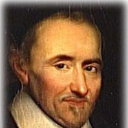- Home
- /
- Analytics
- /
- Stat Procs
- /
- Re: Quantreg on multiple variables
- RSS Feed
- Mark Topic as New
- Mark Topic as Read
- Float this Topic for Current User
- Bookmark
- Subscribe
- Mute
- Printer Friendly Page
- Mark as New
- Bookmark
- Subscribe
- Mute
- RSS Feed
- Permalink
- Report Inappropriate Content
Hello -
I'm very new to SAS and need some assistance using proc quantreg. I have a series of yield data from 1950-2015 for each county in a state. I need to use proc quant reg on each county. Should I use an array? Thanks for any input!
Here is a sample of part of the dataset:
| Year | Allen | Anderson | Atchison | Barber |
| 1950 | 25.0 | 24.0 | 18.0 | 11.0 |
| 1951 | 11.0 | 11.0 | 13.0 | 13.0 |
| 1952 | 22.0 | 21.0 | 16.0 | 22.0 |
| 1953 | 25.0 | 26.0 | 23.0 | 11.0 |
| 1954 | 32.0 | 33.0 | 25.0 | 12.0 |
| 1955 | 31.0 | 32.0 | 35.0 | 6.0 |
| 1956 | 33.0 | 35.0 | 32.0 | 13.0 |
| 1957 | 20.0 | 24.0 | 29.0 | 16.0 |
| 1958 | 30.0 | 30.0 | 30.0 | 29.0 |
| 1959 | 26.0 | 27.0 | 25.0 | 20.0 |
| 1960 | 32.0 | 33.0 | 16.0 | 29.0 |
Accepted Solutions
- Mark as New
- Bookmark
- Subscribe
- Mute
- RSS Feed
- Permalink
- Report Inappropriate Content
Transpose your data so it's long rather than wide and then use a BY variable.
Data becomes:
Year County Value
Code becomes:
proc quantreq data=long ...;
BY COUNTY;
- Mark as New
- Bookmark
- Subscribe
- Mute
- RSS Feed
- Permalink
- Report Inappropriate Content
Transpose your data so it's long rather than wide and then use a BY variable.
Data becomes:
Year County Value
Code becomes:
proc quantreq data=long ...;
BY COUNTY;
- Mark as New
- Bookmark
- Subscribe
- Mute
- RSS Feed
- Permalink
- Report Inappropriate Content
.... And don't forget to sort BY COUNTY YEAR after the transpose step.
- Mark as New
- Bookmark
- Subscribe
- Mute
- RSS Feed
- Permalink
- Report Inappropriate Content
Thank you! Is there a way to print the results into a more uniform result? Instead of multiple tables for each county?
- Mark as New
- Bookmark
- Subscribe
- Mute
- RSS Feed
- Permalink
- Report Inappropriate Content
Yes, but that's a new question.
Actually, I think there's an article out there somewhere so you can search.
You would use the ODS TABLES to capture the tables you wanted into a data set and then you can view them together.
Ods table parameterestimates=want;
proc reg code....;
run;
proc print data=want;
run;
April 27 – 30 | Gaylord Texan | Grapevine, Texas
Registration is open
Walk in ready to learn. Walk out ready to deliver. This is the data and AI conference you can't afford to miss.
Register now and lock in 2025 pricing—just $495!
ANOVA, or Analysis Of Variance, is used to compare the averages or means of two or more populations to better understand how they differ. Watch this tutorial for more.
Find more tutorials on the SAS Users YouTube channel.


